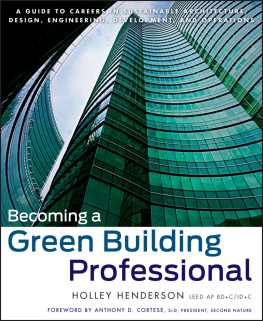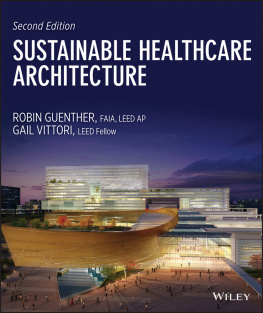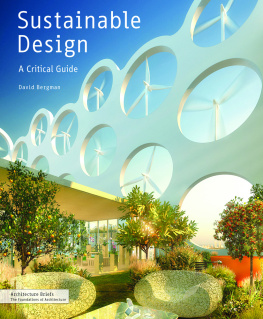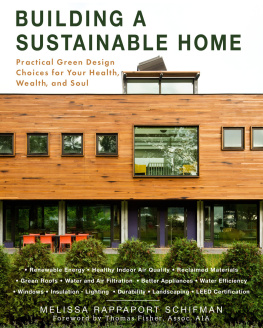This book is printed on acid-free paper. 
Copyright 2012 by John Wiley & Sons, Inc. All rights reserved
Published by John Wiley & Sons, Inc., Hoboken, New Jersey
Published simultaneously in Canada
No part of this publication may be reproduced, stored in a retrieval system, or transmitted in any form or by any means, electronic, mechanical, photocopying, recording, scanning, or otherwise, except as permitted under Section 107 or 108 of the 1976 United States Copyright Act, without either the prior written permission of the Publisher, or authorization through payment of the appropriate per-copy fee to the Copyright Clearance Center, 222 Rosewood Drive, Danvers, MA 01923, (978) 750-8400, fax (978) 646-8600, or on the web at www.copyright.com. Requests to the Publisher for permission should be addressed to the Permissions Department, John Wiley & Sons, Inc., 111 River Street, Hoboken, NJ 07030, (201) 748-6011, fax (201) 748-6008, or online at www.wiley.com/go/permissions.
Limit of Liability/Disclaimer of Warranty: While the publisher and the author have used their best efforts in preparing this book, they make no representations or warranties with respect to the accuracy or completeness of the contents of this book and specifically disclaim any implied warranties of merchantability or fitness for a particular purpose. No warranty may be created or extended by sales representatives or written sales materials. The advice and strategies contained herein may not be suitable for your situation. You should consult with a professional where appropriate. Neither the publisher nor the author shall be liable for damages arising herefrom.
For general information about our other products and services, please contact our Customer Care Department within the United States at (800) 762-2974, outside the United States at (317) 572-3993 or fax (317) 572-4002.
Wiley publishes in a variety of print and electronic formats and by print-on-demand. Some material included with standard print versions of this book may not be included in e-books or in print-ondemand. If this book refers to media such as a CD or DVD that is not included in the version you purchased, you may download this material at http://booksupport.wiley.com. For more information about Wiley products, visit www.wiley.com.
Library of Congress Cataloging-in-Publication Data:
Henderson, Holley, 1971
Becoming a green building professional : a guide to careers in sustainable architecture, design, development and more /Holley Henderson.
p. cm.
Includes index.
ISBN 978-0-470-95143-9 (pbk.); 978-1-118-30028-2 (ebk); 978-1-118-30030-5 (ebk);
978-1-118-31037-3 (ebk); 978-1-118-31038-0 (ebk); 978-1-118-31039-7 (ebk)
1. Sustainable architecture. 2. ArchitectsTraining of. 3. ArchitectureStudy and teaching.
4. Sustainable buildingsDesign and construction. 5. BuildingsEnergy conservation. I. Title.
NA2542.36.H46 2012
720'.47023dc23
2011047550
For my mother, Nora Ellen
Foreword
A Human Design Revolution
by Anthony D. Cortese, Sc.D. President, Second Nature; Organizer, American College & University Presidents Climate Commitment
Humanity and Higher Education at an Unprecedented Crossroads
Because of the extraordinary and exponential growth of population and of the technological/economic system, human beings have become pervasive and dominant forces in the health and well-being of the Earth and its inhabitants. The sum of humanity and the expansive dynamic of industrial capitalism constitute a planetary force comparable in disruptive power to the Ice Ages and the asteroid collisions that have previously redirected Earths history. While the Earths population has grown from 1 billion to 6.7 billion in the last two centuries, energy consumption has risen 80 times, and economic output has risen 68 times. Most of that has occurred in the last half-century. Despite the impressive array of environmental protection laws and programs established in the industrialized countries since 1970, all living systems (oceans, fisheries, forests, grasslands, soils, coral reefs, wetlands) are in long-term decline and are declining at an accelerating rate, according to all major national and international scientific assessments. Some (e.g., major ocean fisheries, coral reefs, forests) have collapsed, and more are moving rapidly to total collapse. Human beings and the rest of nature are burdened by a staggering array of persistent, toxic natural and manmade chemicals, as well as air and water pollution, that are affecting our health and the viability of large ecosystems.
At the same time, we are not succeeding in many health and social goals: 3.2 billion people are without sanitation and earn less than $2.50/day; over a billion have no access to clean drinking water. The gap between the richest 20 percent of the world and the poorest 20 percent has jumped from 28:1 to 85:1 since 1960. Even in the U.S., the gap is the greatest since the Gilded Age of the late nineteenth and early twentieth centuries. We have a worldwide economic recession and international conflicts and wars over resources such as oil and water that are destabilizing world society. This is happening with 25 percent of the worlds population consuming 7080 percent of the worlds resources.
And the challenge that will accelerate all the negative trends is human-induced global warming, primarily from the burning of fossil fuels that is now destabilizing the Earths climate and most of its other life-supporting systems. Despite what we may read or hear in the news media (especially in the U.S.), human-induced climate disruption is real and is already affecting us: It is worse and happening faster than predicted by the most conservative scientists just five years ago in 2007. What most people do not understand is that destabilizing the Earths climate can undermine modern civilization. As Dianne Dumanoski asserts in her recent book, The End of the Long Summer:
Our way of life depends on a stable climate. The cores of ice drilled from the ice sheets on Greenland and Antarctica tell us we live at a truly extraordinary time within the Earths volatile climate history. Through most of our species 200,000year existence, our ancestors had to cope with a chaotic climate marked by extreme variability, a climate that could not support agriculture. The world as we know it, with agriculture, civilization, and dense human numbers, has only been possible because of a rare interlude of climatic gracea long summer of unusual climatic stability over the past 11,700 years. The human enterprise has become a risky agent of global change. The gargantuan size of our modern industrial civilization is now disrupting our planets very metabolismthe vast overarching process that maintains all of earthly life. Because of humanitys planetary impact, this exceptional moment on Earth is drawing to a close. What lies ahead is a time of radical uncertainty.
While this may (and should) make us uncomfortable, it is current reality and leads to the central question for the future of humanity.
How will we ensure that all current and future human beings will have their basic needs met, will live in thriving, secure communities, and will have economic opportunity in a world that will have nine billion people and that plans to increase economic output 34 times by 2050, on a planet whose capacity to support life is more precarious every day?
The consensus among Earth systems scientists is that if everyone lived like the average American, we would need four to five planets (three planets for a European lifestyle) to continually supply all our resources and provide critical ecosystem services, including conversion of waste products into useful substances. At the same time, Asia, Africa, and Latin America are expanding economically at unprecedented rates to lift 3 billion people out of poverty and create a higher quality of life for all of their people. The challenge is not just an environmental one, it is arguably the greatest civilizational, moral, and intellectual challenge that humanity has ever faced. It is not about saving the planet. The planet has survived five major biological extinctions, the last being 65 million years ago in the age of the dinosaurs, and it will survive the sixth being caused by human beings. The goal is to create a thriving civilization for all of humanity. The goal is built on the understanding that all human activities and human survival are completely dependent on the Earth for all of their resources and key ecosystem services, including converting waste products into useful substances.












